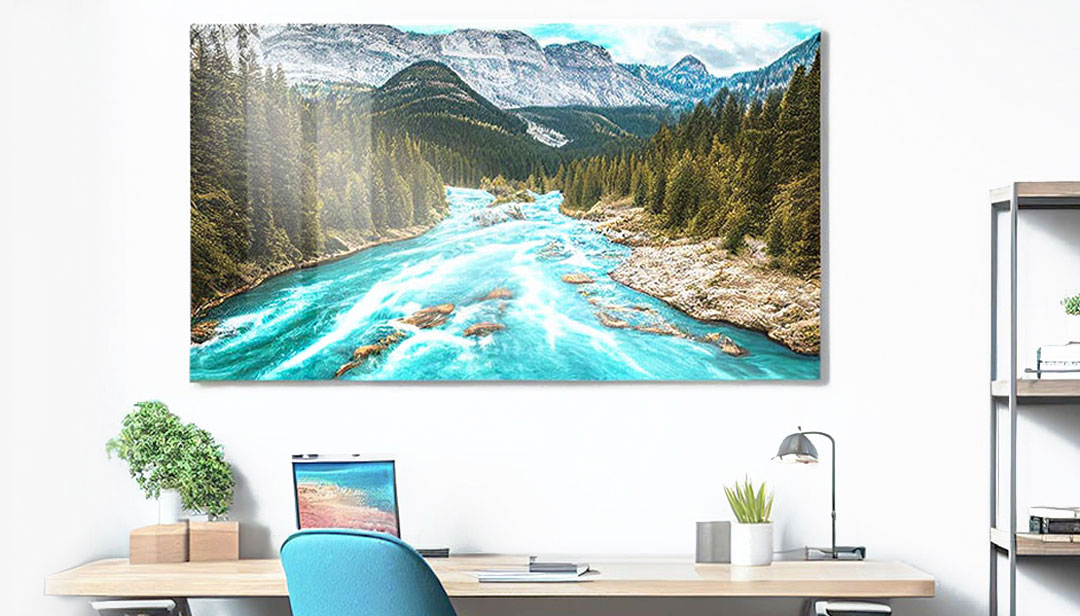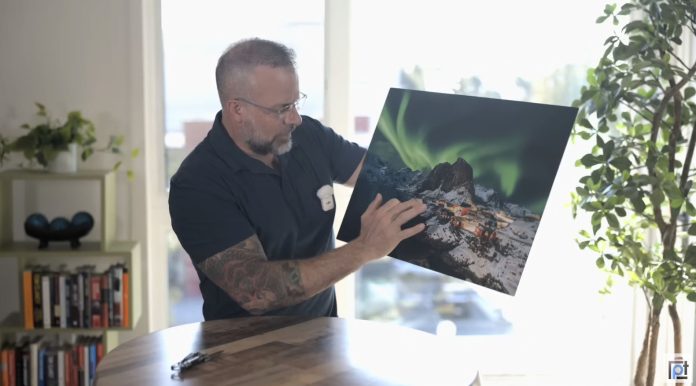Metal prints have become incredibly popular among photographers and artists who want their work to look bold, modern, and durable. But once you decide to print on metal, you’re faced with an important choice: glossy white vs. glossy silver. These two finishes might seem similar at first glance, yet they produce dramatically different results. If you want your artwork or photos to look their best, understanding how each finish behaves is essential.
While both options deliver vibrant color and long-lasting durability, the subtle differences between the two can completely shift the mood, depth, and overall presentation of your metal print. As someone who has worked with a range of print labs, I’ve found that choosing the right finish often depends on the story you want your image to tell. Great print labs like Lumaprints make this process even easier by offering both finishes in a variety of sizes, along with precise color calibration and high-quality materials that bring each print to life.
With that, let’s dive into the debate!
Table of Contents
- What Makes Metal Prints Unique?
- Glossy White vs. Glossy Silver: Key Differences
- When Glossy White Is the Better Choice
- When Glossy Silver Offers an Advantage
- How Labs Like Lumaprints Enhance the Final Look
- Choosing the Best Finish for Your Style
- Frequently Asked Questions
What Makes Metal Prints Unique?
Before comparing glossy white vs. glossy silver, it helps to understand what sets metal prints apart in the first place…
Unlike paper prints, metal prints use a dye-sublimation process that infuses the ink directly into a polymer-coated aluminum sheet. The result is a smooth, durable surface with exceptional vibrancy and detail. Because the ink becomes part of the metal instead of sitting on top, the finished print resists scratches, fading, and moisture far better than traditional prints. See what I mean in our video above, where Alex reviews a beautiful metal print he ordered from Lumaprints.
Another advantage is the consistency of the medium. Metal prints hold detail beautifully, especially in bright or high-contrast areas. They’re also incredibly easy to display, whether you prefer a floating mount, standoff posts, or even a simple easel. The versatility alone makes them appealing for both home décor and gallery installations.
Labs like Lumaprints elevate this experience by using color-calibrated printers and offering a wide range of size and mounting options. The quality control they implement ensures that what you see on your screen translates to the metal as accurately as possible. Whether you’re ordering a small 8×10 or a massive 40×60, that level of consistency matters.
Glossy White vs. Glossy Silver: Key Differences

The glossy white vs. glossy silver conversation ultimately comes down to how the base surface interacts with the image. A glossy white metal print uses a pure white backing beneath the infused image. This gives you a full white point, allowing all colors to appear as they would in a traditional print: accurate, vibrant, and true to life.
On the other hand, glossy silver metal prints skip the white backing entirely. Instead, the natural aluminum becomes the brightest part of the image. This causes lighter areas to take on a metallic sheen and darker areas to deepen. The result can be incredibly striking, but it’s not always ideal for every photo. Because the metal shows through, color accuracy shifts, and the entire image can appear darker compared to a white-based print.
When comparing glossy white vs. glossy silver, the question isn’t which is better overall, but which enhances the specific qualities of your photo. If you prioritize accurate skin tones, true whites, and consistency, glossy white tends to be the safest choice. If you want a bold, artistic effect with visible metal texture, glossy silver offers a unique look that no other medium can replicate.
When Glossy White Is the Better Choice

If your goal is to preserve accurate color and maintain a natural look, glossy white is almost always the stronger option. The white base acts like a clean canvas, reflecting colors the way they were captured. Portraits, landscapes with bright skies, and anything that relies on subtle gradients all benefit from the stability of this finish.
Another advantage of glossy white vs. glossy silver is predictability. When you print on white, what you see on screen is much closer to what you’ll get in the final product. There’s no metal shining through to shift the tones or alter the highlights. This makes glossy white the preferred finish for photographers who want a faithful representation of their work.
In my own experience, glossy white tends to work best when a client expects flawless accuracy, especially with skin tones. Labs like Lumaprints handle this finish beautifully, producing crisp details and impressive depth even in the most color-sensitive images. If your goal is reliability, glossy white is hard to beat.
When Glossy Silver Offers an Advantage

Glossy silver prints bring a very different energy. Instead of a clean white base, the image interacts with the raw aluminum. This metallic effect can be incredibly artistic, especially for high-contrast black-and-white work. Bright areas reflect light, giving the print an almost luminous quality, while shadows appear deeper and more dramatic.
For photographers who want something bold or unconventional, glossy white vs. glossy silver often becomes an easy decision: the silver base simply has more visual personality. It’s ideal for architectural photography, abstract work, and images with strong lines or geometric shapes. The metal enhances the mood in a way paper or even glossy white prints can’t replicate.
Because glossy silver naturally darkens the image, it requires a bit more planning. This is where choosing a trustworthy lab matters. A provider like Lumaprints offers reliable color calibration and consistent results, helping ensure the final print matches your creative intention instead of appearing too dim or uneven. When used thoughtfully, glossy silver can transform a simple image into something bold and highly expressive.
How Labs Like Lumaprints Enhance the Final Look

No matter which finish you choose, the lab you print with plays a major role in how your final piece turns out. High-quality providers use top-tier printers, maintain strict color management, and offer protective coatings that extend the life of your print. Lumaprints excels in these areas, and their metal prints consistently deliver crisp detail and vivid colors.
One reason I often recommend Lumaprints is their range of customizable options, everything from size to mounting hardware. Being able to choose the exact combination you want helps ensure the print fits your style and space perfectly. Their production quality also gives you confidence that glossy white vs. glossy silver will behave as expected, with no surprises in brightness or color.
When you’re investing in metal prints, partnering with a lab you trust removes the guesswork. With Lumaprints, the focus stays on your work, not the technical challenges behind the scenes.
Choosing the Best Finish for Your Style

Ultimately, the glossy white vs. glossy silver decision comes down to the mood you want to create. Glossy white supports accuracy, balance, and realism. Glossy silver leans toward creativity, drama, and texture. Both have their place, and both can elevate your work when used intentionally.
If you’re still torn, consider ordering a small test print of each. Seeing your own images on both surfaces is far more informative than studying examples online. And when you print through a lab like Lumaprints, you’ll know you’re getting a fair comparison that reflects the true qualities of each finish.
Frequently Asked Questions
What types of photos look best on glossy white metal prints?
Photos that require accurate color, clean whites, and natural tones do best on glossy white. Portraits, landscapes, and detailed scenes are strong matches.
What images are best suited for glossy silver metal prints?
Glossy silver works well for high-contrast images, black-and-white photography, and photos where you want the metal texture to enhance the visual impact.
Will glossy silver prints appear darker?
Yes, glossy silver prints naturally look darker since the metal base replaces the white point. Bright areas reflect light, but midtones and shadows deepen.
Does Lumaprints offer both glossy white and glossy silver finishes?
Yes, Lumaprints provides both options, along with multiple mounting choices and size varieties, making it easy to customize your final print.
Is one finish more durable than the other?
Both finishes offer the same durability because they use the same aluminum base and protective coating. The difference is purely aesthetic.
If you’d like, I can build more supporting articles for your silo or help you optimize this one further.
Heads up: Clicking on our affiliate links and exploring our sponsored content helps us at no extra cost to you, and we only recommend gear we’re absolutely crazy about!

